Keynote Forum

Ioana Triandaf
Navel Research Laboratory, USA USATitle: Delay induced swarm pattern bifurcations in mixed reality experiments
Abstract:
Statement of the Problem: Natural swarms exhibit patterns in a variety of forms and have inspired researchers to understand how simple organisms produce complex, emergent patterns occurring when individual organisms follow simple dynamics and local rules. Our work provides a model for the swarming behavior of coupled mobile agents with a communication-time delay which exhibits multiple dynamic patterns in space, which depend on interaction strength and communication delay. Methodology & Theoretical Orientation: A thorough bifurcation analysis has been carried out to explore parameter regions where various patterns occur. We extend this work to robotics applications by introducing a mixed-reality framework in which real and simulated robots communicate in real-time creating the self-organized states predicted by the theory. The mixed-reality framework allows for the systematic and incremental introduction of real-world complexity by coupling a few real robots and a large number of idealized (virtual) robots together in a swarm - the latter being well understood. Findings: The proposed swarm controller was tested on two different robotic platforms: NRL’s autonomous air vehicles and UPENN’s micro-autonomous surface vehicles on water. Theoretical pattern formation results are confirmed in mixed-reality experiments. Conclusion & Significance: Increased understanding of challenges for real robots is obtained as a systematic, incremental verification of swarming behavior at low cost and risk of damage. Switching between patterns is achieved in the hybrid experiments, thus simulating the flexible behavior of the real robotic system.
Biography:
Ioana Triandaf is an applied mathematician specializing in dynamical systems and numerical methods for partial differential equations. She has been modeling swarms since 2004. She is the recipient of the NRL 2005 Alan Berman award for her work on swarming. Since 2017 she collaborated with roboticists in implementing swarming motion on robotic systems. Currently, Triandaf is focusing on analyzing and testing swarm disruption methods and metrics.

Tomasz Bak
Digital Fingerprints, Katowice, Poland PolandTitle: From Internet access devices usage to behavioural model
Abstract:
The way of using a mouse, keyboard, tablet, or phone can be a great source of the information about user behavior. Data can be gathered from a spectrum of sensors built into these devices. Then this data can be transferred into features that characterize users, like manner of typing, speed of cursor, or mouse movement curve. This presentation will focus on how to use those features to build behavioral models which will be unique and adjusted to each of thousands of customers. This problem has some important additional aspects. For one user several different models can be built, therefore some aggregation methods have to be delivered. Some of the data have to be anonymized. Continuous authentication is excepted by businesses. These factors define important limitations for model productionization. They will also be discussed.
Biography:
Tomasz Bąk has completed his Ph.D. in 2018 from the University of Economics in Katowice in the area of spatial sampling. He is the Head of AI in Digital Fingerprints, a company that provides a tool that would defend every user of the critical service from the digital hijack. He has published several papers in reputed journals and in the same gathered 8 years of experience in developing ML & Data Science solutions for business.

Alain De Maertelaere
Cronos NV, Belgium BelgiumTitle: Data-driven decision making - Guiding organizations towards an “AI proof” status
Abstract:
Needless to say that DATA is the most important driver for data-driven digital transformation. In one of its latest reports, Gartner indicates that the number of AI projects will double in 2020. Where today we have 4 to 5 AI projects per company, we go to 35 projects in 2022. The biggest challenges for the implementation of AI are the lack of specialists and, the concerns, and the lack of a clear and effective framework about data quality and defining the scope. Data-driven decision-making is about decisions that are made based on insights gained from (historical) company data by applying data analytics and AI. We forget about intuition, observation, or "informed guesswork": no more shooting in the dark! We say that data is the oil of the 21st century, analytics and AI are the combustion engine. The insights gained from data can be used by companies:
1. to provide valuable information to optimize their current operational efforts and thus become more customer-focused;
2. to forecast future trends;
3. to make them more adaptable to the constant state of change in the digital world;
4. to help them develop strategies and new activities (cf. blue ocean) to generate more revenue.
During the presentation we will explain how we can make the traditional organization AI proof by initiating methods and techniques for the creation of company awareness about the importance of data, the setup of data maturity tracks, the improvement of data quality, "ideation" setup, etc.), and what architectural resources we need to consolidate and store company data to achieve all these and make it accessible to analytics and AI. By the end of the session, it will be obvious to the listener how decisive and how important it is to have a robust, consistent data foundation layer for obtaining reliable results through analytics and AI.
Biography:
Alain De Maertelaere has been working as a freelance consultant for more than 25 years in the domain of data warehousing, business intelligence, data analytics, and artificial intelligence. Due to his experience and expertise, he has been interviewed by many IT-related magazines in Belgium. In 2016 he has awarded by a Belgian customer for initiating and implementing a “data warehouse dream team”. In 2017, Alain has been an award winner of “Innovation by technology”.
Speakers
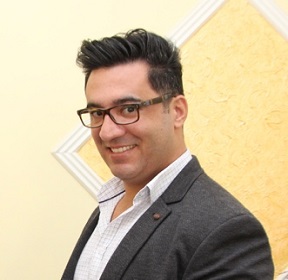
Leandro Romualdo da Silva
IBM, Brazil BrazilTitle: Artificial intelligence applied in business operations
Abstract:
Actually, many business areas use artificial intelligence because of the growing power computational and the of amount data generated in the last years is very representative of the current moment of technology. Nowadays already have multiple machine learning models applied in companies, but now with AI and RPA we can do more for the companies, and AI and RPA make the companies be more competitors with automatization internal processes using computer vision and PNL. New tools for PNL and computer vision can contribute to accelerating the development of new solutions, this brings agility for companies' areas. For example accountants, tax, financial, legal, and other areas. I’m going to talk about how some companies become more competitive using AI and RPA in diverse areas.
Biography:
Leandro is a degree in databases and business intelligence for FIAP in São Paulo – Brazil. Have more than ten years of job experience with data and AI, and now is an Artificial Intelligence Specialist in IBM Brazil, have a great experience with data and AI projects around entertainment, telecommunications, consulting, schools, e-commerce, insures, risks, government companies, and others. He Published content on websites and magazines in Brazil, was the speaker in IBM events and others events, talking about data, data science, artificial intelligence, and AI applied for business.
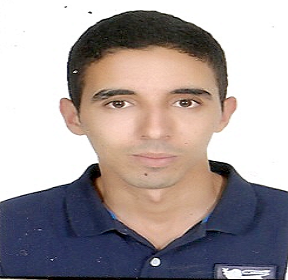
Ouardi Amine
Hassan II University, Morocco MoroccoTitle: Optimizing Heuristic Search Algorithms using Neural Networks
Abstract:
On the opposite side of the uninformed search algorithms, performing a systematic search, heuristic search algorithms are based on multiple rules leading them to estimate, in a predictive way, the minimal cost of the path from the current state to the goal. In this sense, the A* algorithm is an example of heuristics-based algorithms that can guarantee to find a least-cost path to a goal state if this algorithm is using an “admissible heuristic”. A heuristic is said to be “admissible” if it never overestimates the real path cost from the current state to the goal. Furthermore, if the condition h(x) ≤ d(x, y) + h(y) is satisfied by the heuristic h (d denotes that edge length), for every edge (x,y), then his called consistent. And with consistent heuristics, finding an optimal path without processing any node more than once is guaranteed. The main idea consists of developing a Neural Network that can optimize those heuristics to further refine the A* algorithm results. Towards achieving that goal we must find the best synaptic coefficients, and for that reason, a learning phase will be needed during which the network parameters are adjusted until the best admissible and consistent heuristic is obtained, dominating any other heuristic (h1 dominates h2 if for every node n (state), h1(n)>h2(n) ). During this learning phase, and as inputs, the neural network will have some representative examples in the form of pairs of several problems and heuristics ({P1,h1};{P2,h2}...{Pn,hn}), to finally be able to calculate the best heuristic regardless of the inputs.
Biography:
Ouardi Amine, 28 years old, head of Architecture perimeter, ELIS project, Capgemini; Artificial Intelligence Ph.D. student at ENSET Mohammedia, working on optimizing heuristics search algorithms using Neural Networks. Had a Master's degree in Imaging and Business Intelligence, with a graduation project on the Internet Of Things, including QR codes and NFC technology. Got a fundamental license degree in Mathematics and Computer Science, with a final project related to Genetic Algorithms: studying optimal solutions for the Travelling Salesman Problem.
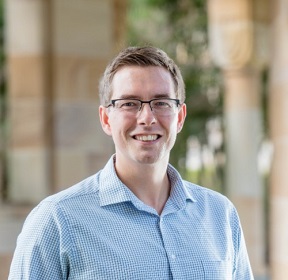
Steven Lockey
University of Queensland Business School, Australia AustraliaTitle: Trust in Artificial Intelligence: What do we know and why is it important?
Abstract:
The rise of Artificial Intelligence (AI) in our society is becoming ubiquitous and undoubtedly holds much promise. However, AI has also been implicated in high-profile breaches of trust or ethical standards, and concerns have been raised over the use of AI in initiatives and technologies that could be inimical to society. Public trust and perceptions of AI trustworthiness underpin AI systems’ social license to operate, and a myriad of company, industry, governmental and intergovernmental reports have set out principles for ethical and trustworthy AI. To guide the responsible stewardship of AI into our society, a firm foundation of research on trust in AI to enable evidence-based policy and practice is required. However, to inform and guide future research, it is imperative to first take stock and understand what is already known about human trust in AI. As such, we undertake a review of 100 papers examining the relationship between trust and AI. We found fragmented, disjointed, and siloed literature with an empirical emphasis on experimentation and surveys relating to specific AI technologies. While findings suggest some convergence on the importance of explainability as a determinant of trust in AI technologies, there are still gaps between conceptual arguments and what has been examined empirically. We urge future research to take a more holistic approach and investigate how trust in different referents impacts attitudinal and behavioral intentions. Doing so will facilitate a more nuanced understanding of what it means to develop trustworthy AI.
Biography:
Steve Lockey is a Postdoctoral Research Fellow in Organisational Trust at the University of Queensland, Australia. He received his Ph.D. from Durham University in 2017. His research interests primarily relate to the development, repair, and measurement of trust in public and private sector settings. Currently, he is investigating the relationship between trust and Artificial Intelligence and the multilevel nature of organizational trust. Steve’s research has informed policy in the United Kingdom, and his scholarly work is published in Business Ethics Quarterly, Personel Review, and the International Journal of Police Science and Management.

Selma Elizabeth Blum
Incube Barcelona SpainTitle: Artificial Intelligence: Technology Applied on Criminal Justice
Abstract:
Technology has become an essential aspect of the law enforcement routine, helping police officers on solving. Preventing and even predicting criminal activity globally. Artificial Intelligence is one of many important tools police can rely on. The harmonic integration between men and machines is now an essential part of operations success on security enforcement. How artificial intelligence can address criminal justice needs? Which innovations do we have available to improve public safety? This article will demonstrate how artificial intelligence (Al) has become a major resource in numerous ways. It is now the ultimate solution for criminal justice, based on big data, algorithmics, and machine learning to detect different patterns of human behavior. Those solutions are mainly based on pattern identification, image scanning, face recognition, sociodemographic analysis, voice parameters, actions, conducts, movements, biometrics, and even emotions acknowledgment, which are now being considered excellent evidence for deception detection. fraud, violence, and terrorist acts. It is also used on DNA documentation, ballistics, and profiling. Unlike humans, machines do not tire. On the opposite, it is proven in several ways, to be better than humans. It is confirmed machines are very good at identifying anomalous patterns and learning new patterns faster than humans. Al technologies provide the capacity to detect, predict and evaluate, overcome errors, and present virtuous results. The more amount of data, the more precise will be the outcome. Al algorithms can potentially be used as a very efficient observer, increasing the accuracy of police officers on their complex daily routine. Predictive analysis (ex. PREDPOL) is one of many examples we will show to demonstrate how important those solutions subsist and innovate the security context. Those systems process large volumes of information simultaneously, providing precise outcomes. This article will deeply investigate and compare several platforms used by different law enforcement units around the globe, pointing new solutions, challenges, and potential developments needed. In a conclusion, we have noticed how important was the introduction of Al on the law enforcement routine performing risk evaluations, crime solutions, and delinquency prevention.
Biography:
Selma Blum is a forensic psychologist, founder of a technology start-up in Brazil, Spain, and Israel known as Incube. She also has several years of experience in technology applied to security enforcement, behavior analysis, criminal profiling, artificial intelligence, and Aviation Security. She also performs external collaborations and consulting on several law enforcement units like Brazilian Civil Police, Interpol, Spanish Ministry of Interior, and Guardia Civil. Selma is worldwide known as a lecturer in several congresses, security events, universities, and airports. Mrs. Blum also published several articles regarding the importance of technology for law enforcement excellence. She is also well recognized as an intelligence instructor, having been training international airports staff on different aspects of behavior science. For her, there is no security without technology anymore. The integration between agents and systems is one of the most important resources public safety can rely on to deal with criminality properly. To reach high standards of quality, it is also mandatory investments in training, infrastructure, research, and knowledge exchange.

Mohammed Mubin Mallick
Kiran Smart Company KuwaitTitle: Robotics Automation in Hospitality Industry
Abstract:
INTRODUCTION: Robotics automation is going to play a major role in the hospitality industry. How robots can increase the productivity, efficiency of employees, take care of the non-availability of skilled laborers, retention of loyal customers, put humans where needed human interaction, putting robots into places that do not need humans to involve in the tasks.
AIM: Both systems, humans, and robots cooperate to achieve the goal of running the hotel operation successfully during unpredicted situations like COVID 19.
MATERIALS AND METHODS: Based on our research findings, it is possible to establish effective and productive Robotics Automation & Human collaboration in managing hotel operations. This also creates the ability to manage tasks that are unmanageable with traditional human methods because of the complexity of the tasks. We have uncovered and selected the most promising robots that have AI capabilities and autonomous movement. We have developed the most innovative and important principles and aspects of their adaptation and customization for the hospitality industry. Finally, in the light of innovation and opportunities, we pointed to the direction of further deploying robots as automation to the core of innovation that could help the hospitality industry to operate successfully.
RESULTS: Owners, managers, and owners representative of the hotels are happy to see the automation robotics solutions that can help to run their operation without any interruption. At the same time, guests to are satisfied to see the idea of robotics automation that can take care of their services and requests.
CONCLUSIONS: Research shows that the present generation and the future generation would be accepting the robotics automation solution in the hospitality industry due to various factors. The major factors are 2 types: Predictable factors which could be competition, brand value, retention of loyal customers, etc. The second will be an unpredictable factor-like COVID 19 and other natural disasters.
Biography:
Mohammed Mubin Mallick has completed my MBA at the age of 23 years from Cardiff University (UK). Mohammed Mubin Mallick is the CEO of Kiran Smart Company and Founder of Mi-Robots. Mohammed Mubin Mallick has implemented many robotics solutions. Presently he is doing research on hospitality robotics solutions that can be implemented worldwide.

Marcell Vollmer
Senior Vice President, Chief Innovation Officer, Celonis SE GermanyTitle: The h-trak system journey to AI
Abstract:
What is Artificial Intelligence?
In truth, artificial intelligence has been in play since the invention of the calculator. Before computing existed, all computations, reasoning, and decision-making were carried out by human intelligence alone. As computing has evolved, become ubiquitous, and therefore more “democratic”, its development has accelerated. The volume of data now captured is also important and plays a big role in future applications within the Machine Learning and Deep Learning subsets of AI.
h-trak: Past
- An initial application on palm pilot PDA. Computational ability very low, limited memory to manage complex data, limited applications.
- Interoperability non-existent. Therefore, data sets not rich in content and disjointed from the enterprise ecosystem
- However, the first cloud-based solution in healthcare. This created a future-proofed platform
- Automation of certain processes – e.g. automatically calculate purchase order quantities based on consumption
h -trak: Present
- h-trak interoperable with hospital ecosystem – high level of integration
- Big Data approach, and more reliable and accurate datasets
- The massive increase in computing power at the mobile level. Allows faster and greater computations, and even more automation replacing human manual tasks
- Early stages of predictive analysis based on available and accurate datasets, and improved computational power
h-trak: Future
- Machine learning capability to facilitate clinical decision support
- Eliminate wrong implants being used, or missing implants in procedure
- Predict most efficient and effective implants to use
- Automatically adjusted demand management based on predictive analysis
- Optimization algorithms to find the most efficient, effective, and sustainable clinical outcomes
Biography:
Marcell Vollmer is Chief Innovation Officer at Celonis and is responsible for defining and driving innovations and digital transformation for customers globally. A thought leader in procurement, supply chain, finance, and shared services, Marcell’s expertise lies in defining digital transformation strategy and making ‚Run Simple‘ a reality for global customers and consumers by delivering transformation success and process productivity gains. Previously, he was Chief Digital Officer In SAP’s Cloud Business Group and Chief Operating Officer for SAP Ariba where he successfully developed and led global business development, procurement, go-to-market, sales operations, and enablement. And prior to that Marcell was Chief Procurement Officer of SAP and was responsible for the reorganization and process optimization for an end-to-end source-to-pay organization. Since joining SAP in 2005 he has held various leadership roles involving restructuring, improving project efficiency, and execution of global programs in finance, procurement, sales, human resources, and post-merger integrations.
Keynote Forum
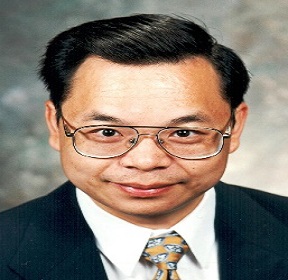
Simon X Yang
University of Guelph CanadaTitle: Bio-inspired Intelligence of Real-time Navigation and Cooperation of Multiple Robotic Systems
Abstract:
Research on biologically inspired intelligence has made significant progress in both understanding the biological systems and developing bionic engineering applications to various autonomous robotics systems. In this talk, I will start with a very brief introduction to biologically inspired computational neural dynamics algorithms and their applications to biological and bioinspired systems. After that, I will focus on our recent research on bioinspired intelligent real-time navigation and cooperation of various multiple autonomous robotic systems, such as real-time path planning, tracking, and control of autonomous mobile, aerial, water surface, and underwater robotic systems; and intelligent navigation and cooperation of multi-robot systems.
Biography:
Simon X. Yang received the B.Sc. degree in engineering physics from Beijing University, China in 1987, the first of two M.Sc. degrees in biophysics from the Chinese Academy of Sciences, Beijing, China in 1990, the second M.Sc. degree in electrical engineering from the University of Houston, the USA in 1996, and the Ph.D. degree in electrical and computer engineering from the University of Alberta, Edmonton, Canada in 1999. Prof. Yang joined the School of Engineering at the University of Guelph, Canada in 1999. Currently, he is a Professor and the Head of the Advanced Robotics and Intelligent Systems (ARIS) Laboratory at the University of Guelph in Canada. Yang has diversified research expertise. His research interests include robotics, artificial intelligence, sensors and multi-sensor fusion, wireless sensor networks, intelligent control, machine learning, fuzzy systems, intelligent communication and transportation, and computational neuroscience. Yang has been very active in various professional activities. He serves as the Editor-in-Chief of the International Journal of Robotics and Automation, and an Associate Editor of IEEE Transactions on Cybernetics, IEEE Transactions of Artificial Intelligence, and several other journals. He has been involved in the organization of many international conferences.
Speakers
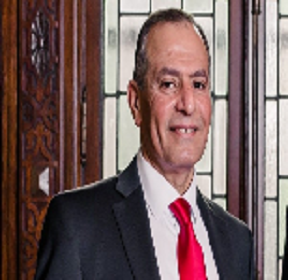
Mohamed Sadek
Com-Iot Technologies Dubai, UAETitle: The impact of AI on smart cities in the areas of road, transport, traffic & security
Abstract:
Statement of the Problem: A smart city is a safe & secure city for all its inhabitants. A vibrant and dynamic city is full of life and activities on its roads, streets & highways. Also, its residents require security in their homes and workplaces. Applying AI technologies such as machine learning and deep learning on data generated from the city, such as road data, vehicles on the road, road lanes, and with the use of high precision devices such as LiDAR sensor technology and vehicle perception systems can result in powerful capabilities that capture these raw data and transform it to extremely valuable information and data that cities, road companies, enforcement authorities, and municipalities can use to learn details about road conditions, utilization, accidents and events, traffic violations, driver behaviors, and much more. Likewise, in the area of physical security, by applying AI with LiDAR sensors and people perception systems, the system can gather raw data from locations requiring high levels of security such as airports, prisons, international borders, military installations, critical infrastructures, and others leading to applications such as perimeter protection, exit/entrance monitoring, gate access control, restricted zone enforcement, people counting, precise crowd counting, crowd management and much more. Sensor fusion between LiDAR sensors and cameras can only enhance the outcome and provide critical visual evidence of violations, intrusion, and other alert generating incidents which can also be live-streamed as well as video recorded on-demand.
Biography:
Current: CEO/Founder COM-IoT Technologies. A Dubai, UAE-based AI company. Previous: Managing Director of SES_O3B Networks in the MECA region. Upon completing his Master’s of Science degree in Computer Science from the University of Illinois in Chicago in 1989 Mohamed Sadek joined AT&T Bell Labs in Naperville, IL. Where he led a team of software developers working on feature development for AT&T. In 1997 he completed his MBA from the Wharton School of Business, University of Pennsylvania, and led Lucent Technologies in Saudi Arabia until the end of 2000 where he achieved sales of over $1.3 B. In January 2001 He became MD for Nortel Networks in the Middle East until 2005 where he rejoined Lucent Technologies in Abu Dhabi as head of Sales for the Middle East & North Africa. In 2009 Mr. Sadek joined Norconsult in Saudi as VP, International Projects and in April 2013 he joined O3B Networks.
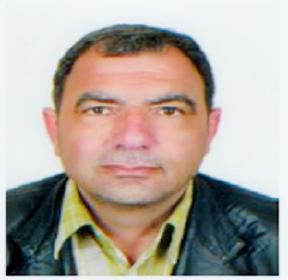
Isham Alzoubi
School of Surveying Geospatial Engineering SyriaTitle: Prediction of environmental indicators in land levelling using artificial intelligence techniques
Abstract:
This work aimed to determine the best linear model Adaptive Neuro-Fuzzy Inference System (ANFIS) and Sensitivity Analysis to predict the energy consumption for land leveling. In this research effects of various soil properties such as Embankment Volume, Soil Compressibility Factor, Specific Gravity, Moisture Content, Slope, Sand Percent, and Soil Swelling Index in energy consumption were investigated. The study consisted of 90 samples were collected from 3 different regions. The grid size was set at 20 m in 20 m (20*20) from farmland in the Karaj province of Iran. The values of RMSE and R2 derived by the ICA-ANN model were, to Labor Energy (0.0146 and 0.9987), Fuel energy (0.0322 and 0.9975), Total Machinery Cost (0.0248 and 0.9963), Total Machinery Energy (0.0161 and 0.9987) respectively, while these parameters for multivariate regression model were, to Labor Energy (0.1394 and 0.9008), Fuel energy (0.1514 and 0.8913), Total Machinery Cost (TMC) (0.1492 and 0.9128), Total Machinery Energy (0.1378 and 0.9103). Respectively, while these parameters for the ANN model were, to Labor Energy (0.0159 and 0.9990), Fuel energy (0.0206 and 0.9983), Total Machinery Cost (0.0287 and 0.9966), Total Machinery Energy (0.0157 and 0.9990) respectively, while these parameters for Sensitivity analysis model were, to Labor Energy (0.1899 and 0.8631), Fuel energy (0.8562 and 0.0206), Total Machinery Cost (0.1946 and 0.8581), Total Machinery Energy (0.1892 and 0.8437) respectively, respectively, while these parameters for ANFIS model were, to Labor Energy (0.0159 and 0.9990), Fuel energy (0.0206 and 0.9983), Total Machinery Cost (0.0287 and 0.9966), Total Machinery Energy (0.0157 and 0.9990), Results showed that ICA_ANN with seven neurons in hidden layer had better. According to the results of Sensitivity Analysis, only three parameters; Density, Soil Compressibility Factor and, Embankment Volume Index had a significant effect on fuel consumption. According to the results of regression, only three parameters; Slope, Cut-Fill Volume (V) and, Soil Swelling Index (SSI) had a significant effect on energy consumption. Using an adaptive neuro-fuzzy inference system for the prediction of labor energy, fuel energy, total machinery cost, and total machinery energy can be successfully demonstrated.
Biography:
Alzoubi has completed his Ph.D. at the age of 40 years at Tehran University and postdoctoral studies from Tehran University School of Surveying Geospatial Engineering-Department of Surveying and Geomatics Engineering. He is the director at the Directorate of Engineering and Transportation, a premier service organization. He has published more than 15 papers in reputed journals and has been serving as an editorial board member of repute. He Opened and studied the financial offers and the organization of the fundamental record, supervising the efficiency of electrical generators at the Nseeb border center, and Supervising the efficiency of agricultural machinery at the ministry of agriculture.
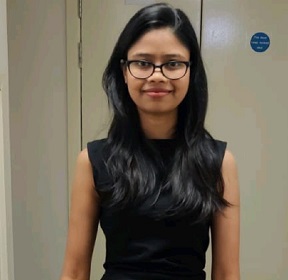
Anjali Dharmik
University of London UKTitle: Application of artificial intelligence in COVID-19
Abstract:
Coronaviruses transmit COVID-19, a rapidly spreading disease. A Coronavirus infection (COVID-19) was first discovered in December 2019 in Wuhan, China, and spread rapidly throughout the planet in exactly some months. because of this, the virus can cause severe symptoms and even death, especially within the elderly and in people with medical conditions. The virus causes acute respiratory infections in humans. the primary case was diagnosed in China in 2019 and the pandemic started in 2020. Since the quantity of cases of COVID-19 is increasing daily, there are only a limited number of test kits available in hospitals. So, to stop COVID-19 from spreading among people, an automatic diagnosis system must be implemented. during this study, three pre-trained neural networks supported convolutional neural networks (VGG16, VGG19, ResNet50) are proposed for detecting Coronavirus pneumonia infected patients through X-rays and computerized tomography (CT). By using cross-validation, we've got implemented binary classifications with two classes (COVID-19, Normal (healthy)). Taking into consideration the results obtained, the pre-trained ResNet50 model provides the simplest classification performance (97.77% accuracy, 100% sensitivity, 93.33% specificity, 98.00% F1-score) among the opposite three used models over 6259 images.
Biography:
Anjali Dharmik has 5+ Years of Industrial experience in the fields of Data Science, Deep Learning, Machine Learning, Software engineering, Cloud, Automation, Big data, and analytics. Proactive and fast learning individual passionate about data and Artificial Intelligent, solving and building data science use cases with excellent practical and analytical skills.

Rohit Talwar
Fast Future UKTitle: Survey Invitation: The Rise and Implications of Artificial General Intelligence (AGI)
Abstract:
How did GPT-3 answer the questions? As someone with an interest in technology's impacts, I am writing to invite you to take part in this survey being run In a collaboration between Fast Future, London Futurists, and the UK node of the Millennium Project. This is part of a global discovery program on AGI, The survey focuses on how AGI might evolve and impact society, the economy, business, and government. You can take the survey here https://www.surveymonkey.co.uk/r/FFAGI.
All questions are optional. It takes 7-10 minutes to complete the multiple-choice questions, a little more if you want to add comments. Everyone who completes the survey will get a copy of the results and a free eBook from the Fast Future bookstore. The survey closes on February 21st Here's how Open-AI's GPT-3 natural language processing tool answered the survey - a mix of insightful, robotic, and circular answers - proving we're not at AGI yet.
Biography:
Rohit is a global futurist, award-winning keynote speaker, author, and CEO of Fast Future. Rohit helps clients navigate disruption, understand the emerging landscape, and shape the future. Rohit has a passion for futureproofing ourselves, and how to advance individual lives, society, and business by harnessing new ideas, innovation, and disruptive developments such as 'corporation zero' thinking, AI, and human enhancement. Rohit is currently helping clients understand and develop strategies for crypto, blockchains, metaverses, and AI.
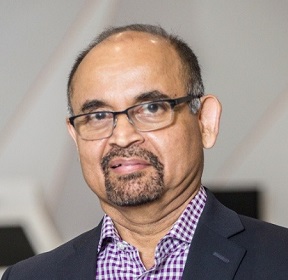
Vijay Nadkarni
CTO at Movella, Inc USATitle: Deep Learning-Based Human Activity Recognition for Industrial Operations & Robotic Emulation
Abstract:
The ability to recognize, analyze and emulate human activities is becoming increasingly important in a multitude of industries, including robotics, industrial operations, healthcare, sports, and numerous others. The fusion of AI-enabled computer vision and physical sensing is key to this. Ranging from emulation of simple human activities such as training robots to perform a sort, pick and place operations to complex ones such as the assessment of skills of assembly line operators or the technique of sports players, there now exists the ability to recognize and assess human activities for industrial automation or training and improvement of the physical skills of individuals. This presentation will cover the AI technologies at play here, including pose estimation and human action recognition (HAR), and provide an overview of the deep learning algorithms that are used. In addition, a summary of the challenges that are presently being researched will be presented.
Biography:
Vijay Nadkarni is Chief Technology Officer of Movella. He is responsible for Movella’s technology strategy advancement, technological vision, and roadmap. This involves embracing four key areas, namely AI, SaaS, motion sensing, and computer vision. Vijay has over 25 years in technology leadership and management across a wide range of industries. Before Movella, he served as VP of Artificial Intelligence at Tech Mahindra where he headed its AI Practice across 10 diverse verticals. Before that, Vijay was VP of Artificial Intelligence at Visteon for its autonomous driving and infotainment product lines. A veteran of Silicon Valley, Vijay has co-founded multiple startups in AI, motion analytics, and the cloud of which Veraz Networks - a VoIP company - had a NASDAQ IPO. Vijay has an MBA and MSEE, both from Northwestern University, and a BS in Electrical Engineering from IIT-Bombay.

